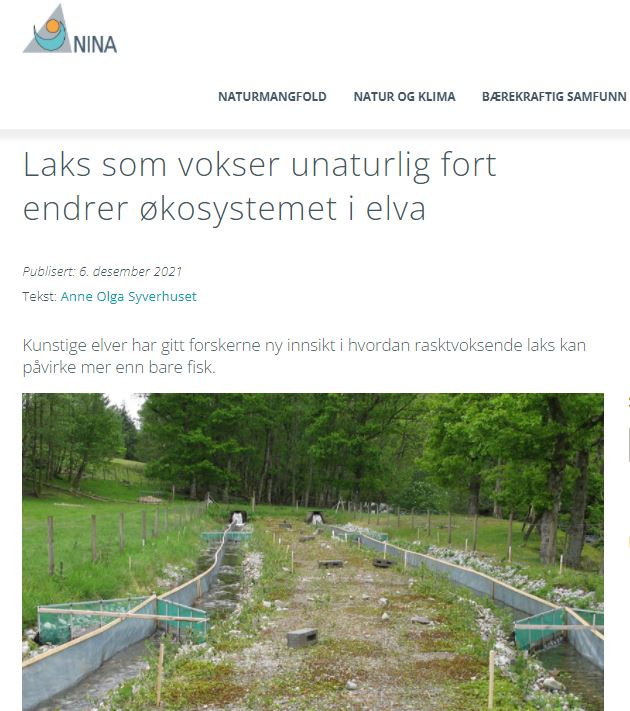
Ný vísindarannsókn hefur leitt í ljós að eldislax, sem vex ónáttúrulega hratt, breytir öllu lífríki þeirra vatnsfalla sem hann nær bólfestu í. Hingað til hefur verið einblínt á skaðann af erfðablöndun eldislaxa við villta laxastofna en þessi nýja rannsókn sýnir að áhrifin eru mun víðfemari en það.
Rannsóknin er samvinnuverkefni NINA (norsku náttúrufræðistofnunarinnar) og vísindafólks frá Frakklandi, Kanada og Svíþjóð.
Allt við sjókvíaeldi í opnum netapokum ber að sama brunni. Það veldur miklum og útbreiddum skaða á lífríkinu.
Í úrdrætti greinarinnar segir:
Use of fast-growing domesticated and/or genetically modified strains of fish is becoming increasingly common in aquaculture, increasing the likelihood of deliberate or accidental introductions into the wild.
To date, their ecological impacts on ecosystems remain to be quantified. Here, using a controlled phenotype manipulation by implanting growth hormone in juvenile Atlantic salmon (Salmo salar), we found that growth-enhanced fish display changes in several phenotypic traits known to be important for ecosystem functioning, such as habitat use, morphology and excretion rate. Furthermore, these phenotypic changes were associated with significant impacts on the invertebrate community and key stream ecosystem functions such as primary production and leaf-litter decomposition.
These findings provide novel evidence that introductions of growth-enhanced fish into the wild can affect the functioning of natural ecosystems and represent a form of intraspecific invasion. Consequently, environmental impact assessments of growth-enhanced organisms need to explicitly consider ecosystem-level effects.
